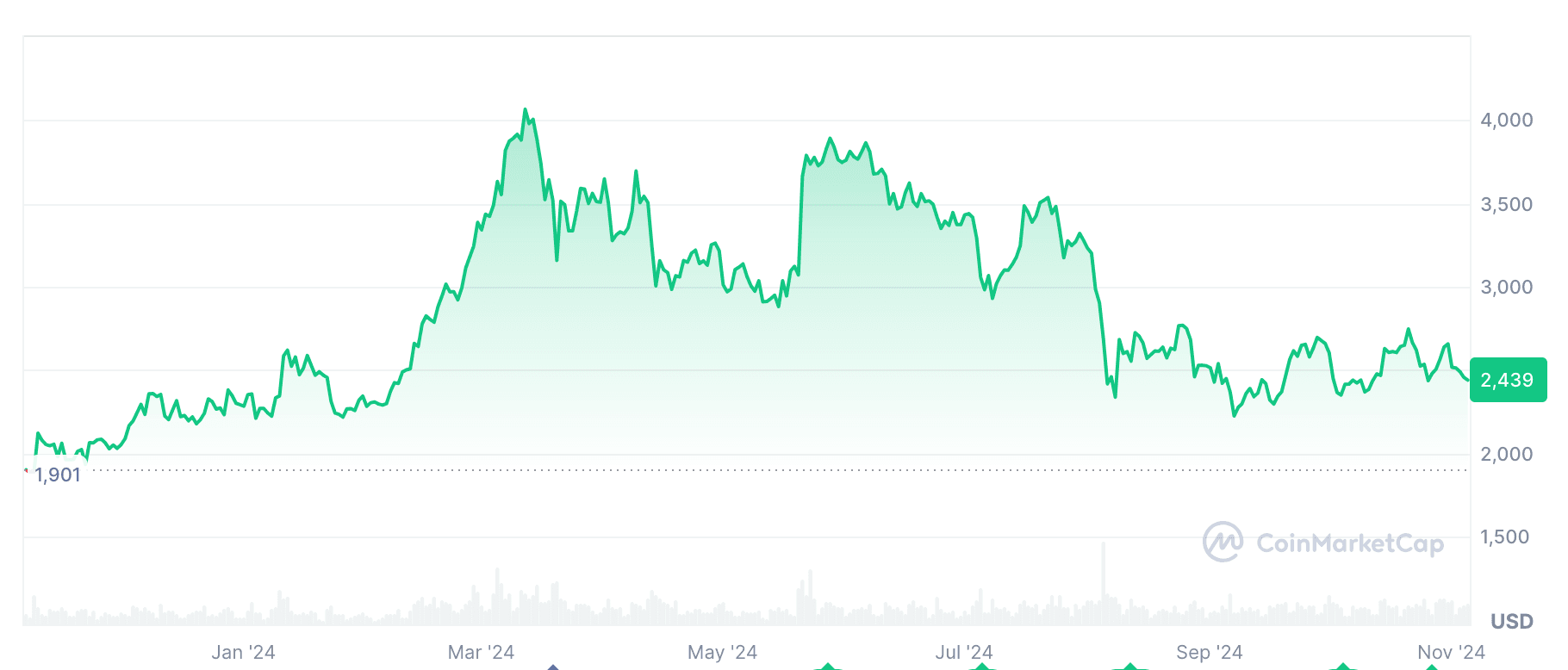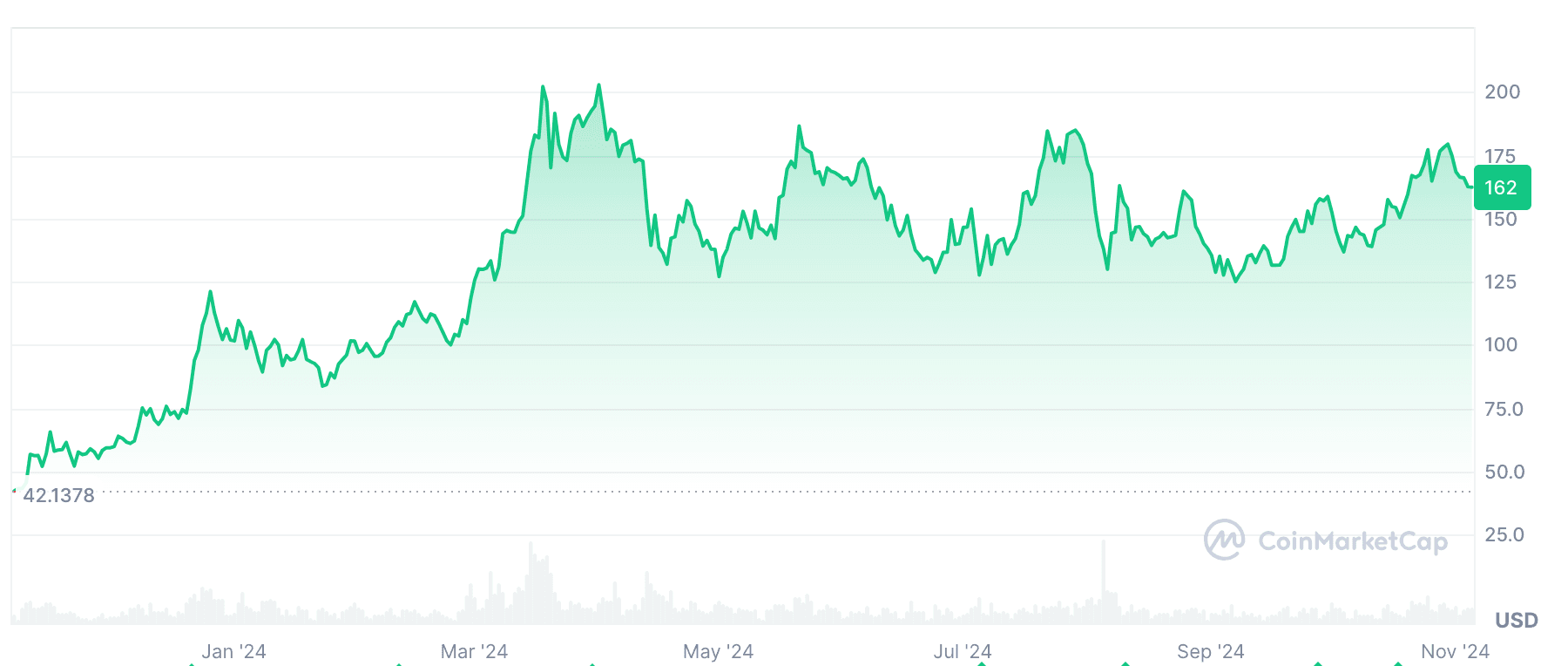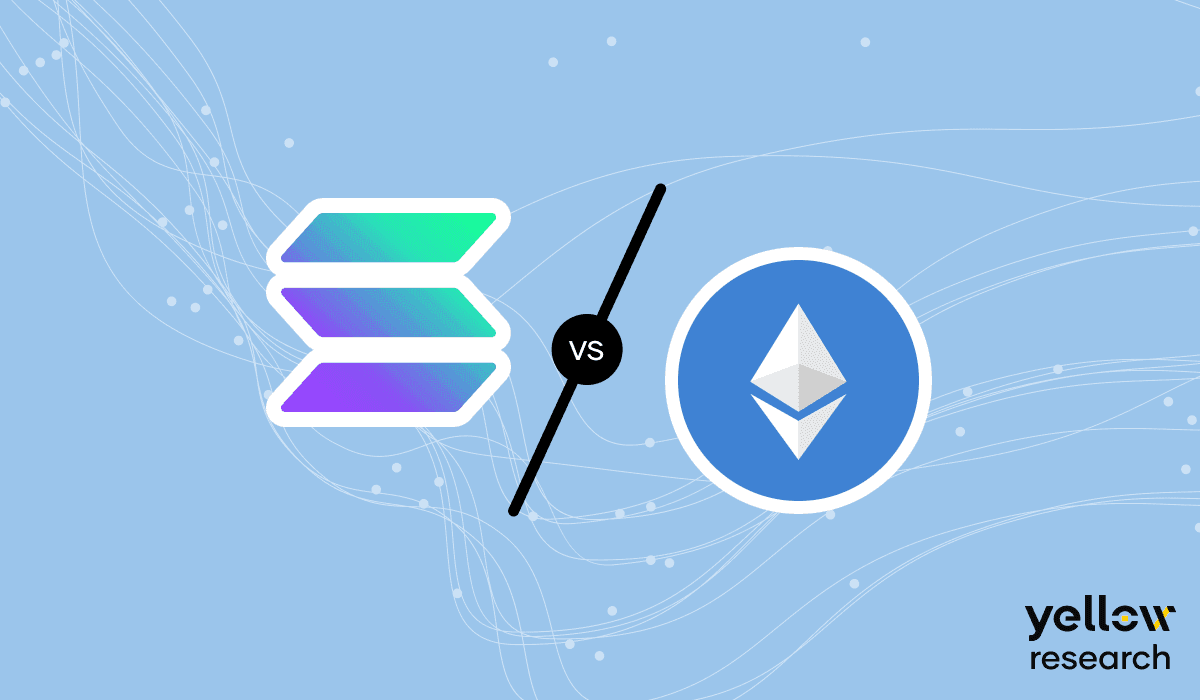Two altcoins have always been especially notable in the always changing terrain of cryptocurrencies: Ethereum and Solana. Both have created important niches in the blockchain ecosystem and have special qualities that have drawn developers, investors, and aficionados all around.
Originally introduced in 2015, Ethereum has long been the innovator in distributed apps (dApps) and smart contracts. Its platform has been the basis for many ideas in distributed finance (DeFi) and non-fungible tokens (NFTs), so confirming its centrality in the crypto market.
Conversely, Solana, debuted in 2020, has climbed the ranks quickly to rank among the most exciting blockchain initiatives. Solana solves some of the major constraints Ethereum faces, especially with regard to network congestion and high transaction fees, by stressing fast transactions and scalability. The rivalry between these two platforms represents the larger struggle in the crypto domain—a race to attain the ideal mix between scalability, security, and decentralization.
Furthermore, we show seven convincing arguments why Solana might be a better bet than Ethereum over this period. These factors cover technical developments, financial indicators, and strategic changes that help Solana to fit the dynamics of the present market.
Ethereum: Current State and Developments

Only behind Bitcoin, Ethereum has kept its second-largest coin ranking based on market capitalization. Both institutional and retail investors have always included Ether (ETH), her native token, as a mainstay in their portfolios. The DeFi and NFT movements' backbone is the network since its capacity to enable smart contracts has resulted in an explosion of distributed apps.
The ongoing release of Ethereum 2.0, sometimes known as Eth2, is among the most notable changes. This update is meant to increase the transaction processing capability of the network, so relieving the congestion and high gas prices that have dogged users. The Ethereum Foundation claims that two essential parts of this development are the deployment of PoS and shard chains.
Notwithstanding these initiatives, the network congestion of Ethereum still causes great concern. Etherscan data shows that gas fees can still be shockingly high during periods of maximum usage, so compromising the usability of dApps and deterring new users. Some developers have been looking for other systems that provide more effective transaction processing in response this.
Regarding market capitalization, Ethereum is still in a commanding posture. Rising rivals have put strain on its market share, though. Though growth rates have slowed from past years, the Total Value Locked (TVL) in Ethereum-based DeFi systems is still rather high.
Ethereum's market capitalization as of the start of November, 2024, is roughly $293 billion, a reflection of its great acceptance and the several projects developed on its network. Ether (ETH) is currently valued at $2,436, slightly rising 3% from the close before. Aiming to increase scalability and lower environmental impact, Ethereum's shift to a proof-of- stake (PoS) consensus mechanism in 2022, known as "The Merge," High gas prices and network congestion still exist, though, which fuels continuous debates on more scalability solutions including sharding and layer-2 technologies.
Solana: Rising Through the Ranks

Rising to prominence for high throughput and low transaction costs, Solana is among the fastest-growing blockchain systems. Reflecting rising investor confidence, SOL, its native token, has seen amazing price increase. Unlike Ethereum's present capacity, Solana's design is meant to support thousands of transactions per second.
Solana's performance depends mostly on its special consensus mechanism, which combines Proof of Stake (PoS) with Proof of History (PoH). This creative method helps the network to keep security and decentralization while yet achieving fast processing. Solana's official records state that with block times as low as 400 milliseconds, the network can manage up to 65,000 transactions per second.
Rising adoption of Solana-based projects, strategic alliances, and the general positive attitude in the bitcoin market have all had an impact on recent price swings of SOL. SOL has confirmed its ranking among the top cryptocurrencies by market capitalization as of autumn 2024.
Breaking news from the Solana ecosystem points to an increase in user involvement and developer activity. From DeFi systems to NFT markets and Web3 apps, the network has drawn a lot of initiatives. Solana's speed and scalability have been chosen by notable initiatives including Serum, a distributed exchange, and Audius, a distributed music streaming service.
Solana has also landed large sums of money from well-known venture capitalists. Lead by Andreessen Horowitz and Polychain Capital, Solana Labs closed a $314 million funding round in June 2021. These funds have driven the expansion and development projects of the network.
With its native token, SOL, valued at $162, Solana's market capitalization is roughly $76 billion. Using a mix of proof-of- history (PoH) and proof-of- stake (PoS) consensus mechanisms, Solana's architecture lets high transaction throughput, processing up to 65,000 transactions per second (TPS) with low cost. Growing numbers of dApps and DeFi initiatives to its platform have drawn to this efficiency. Recent events show rising user activity and adoption as daily network fee generating surpasses Ethereum.
6 Reasons Why Solana Might Be a Better Bet Than Ethereum
Superior Scalability and Transaction Speed
Solana’s ability to process thousands of transactions per second significantly surpasses Ethereum’s current capacity. This scalability is critical for applications requiring high throughput, such as high-frequency trading platforms and real-time gaming.
The network’s low latency ensures swift transaction confirmations, enhancing user experience.
Lower Transaction Fees
One of the most pressing issues with Ethereum is its high gas fees, which can make small transactions economically unviable. Solana offers substantially lower fees, often a fraction of a cent per transaction. This affordability opens the door for broader adoption, especially in DeFi and NFT sectors where transaction costs can be a barrier to entry.
Innovative Technology with Proof of History
Solana’s implementation of Proof of History provides a historical record that proves that an event has occurred at a specific moment in time.
This mechanism enhances the network’s efficiency and throughput. By cryptographically verifying the passage of time between events, Solana reduces the computational burden on nodes.
Growing Ecosystem and Developer Adoption
The rapid expansion of projects on Solana is indicative of its growing appeal to developers. The Solana Foundation has been proactive in supporting new projects through grants and incubation programs.
This has led to a vibrant ecosystem with a diverse range of applications, attracting users and investors alike.
Resilience Against Network Congestion
Solana’s high throughput capacity makes it less susceptible to network congestion, a problem that has frequently affected Ethereum. This reliability is crucial for maintaining consistent network performance and user trust, particularly during periods of high demand.
Potential for Higher Return on Investment
Given Solana’s relative youth compared to Ethereum, it may offer greater upside potential. As the network continues to mature and capture market share, early investors could see substantial returns. The combination of technological advantages and market positioning makes Solana an attractive option for those seeking growth opportunities.
3 Reasons Why Ethereum Might Still Beat Solana in Short Term
While Solana presents compelling advantages, Ethereum’s established trust, regulatory standing, and extensive developer ecosystem make it a continued force in the blockchain space this autumn.
Stronger Developer and User Base
Ethereum’s early-mover advantage has fostered a vast developer community, making it home to thousands of dApps, decentralized exchanges (DEXs), and protocols. This massive ecosystem isn’t just a measure of popularity; it’s a foundation of security, user trust, and consistent development activity. Ethereum’s network effects mean that developers continue building atop a robust infrastructure with established tools and documentation, despite high gas fees or scalability issues.
Solana, while rapidly growing, has yet to achieve the depth and diversity of applications that Ethereum supports, making Ethereum’s ecosystem a formidable competitive edge.
Institutional Support and Regulatory Acceptance
Ethereum’s longstanding reputation and history give it a more favorable standing with institutions and regulators. Ethereum’s proof-of-stake (PoS) model, introduced with “The Merge” in 2022, has strengthened its position as an environmentally responsible blockchain, gaining further appeal among environmentally conscious investors. Furthermore, with Ethereum’s clear approach to scaling through layer-2 solutions like Arbitrum and Optimism, it has attracted institutional players who prioritize regulatory clarity and network stability.
Solana, on the other hand, is perceived as a newer, riskier alternative by some institutions due to its recent network outages and challenges.
Proven Security and Stability
Despite facing its own challenges, Ethereum has demonstrated resilience over the years, with a relatively high level of stability and security. Ethereum’s use of a decentralized network of nodes enhances its robustness against failures and attacks.
At the same time, Solana has experienced network outages, prompting concerns about its reliability in high-stakes environments. For critical applications in finance and DeFi, Ethereum’s track record of maintaining uptime and addressing vulnerabilities head-on might still make it the platform of choice among developers and users wary of technical interruptions.
Final Thoughts
The rivalry between Ethereum and Solana captures the larger dynamics of the bitcoin market, in which scalability and invention rule.
First-mower advantage and existing ecosystem of Ethereum have strengthened its position as a top platform for distributed apps. One cannot ignore, though, its continuous difficulties with scalability and high transaction fees.
Solana offers a convincing substitute that addresses many of the problems Ethereum now runs across. Its low fees, fast transactions, and creative consensus systems help it to stand well in the present scene of markets. Its prospects are even more improved by the fast expansion of its ecosystem and strong institutional support.
Based on their particular requirements and risk tolerance, developers and investors have to balance the features of every platform. Ethereum gives stability and a proven track record; Solana offers modern technology and the possibility for notable expansion.
It is obvious as we negotiate the autumn of 2024 Solana has become a strong rival for Ethereum. Whether it is a better bet finally relies on personal opinions and changes in the market.
Disclaimer: This article is for informational purposes only and does not constitute financial advice. Cryptocurrency investments carry inherent risks, and readers should conduct their own research or consult with a professional financial advisor before making any investment decisions.

